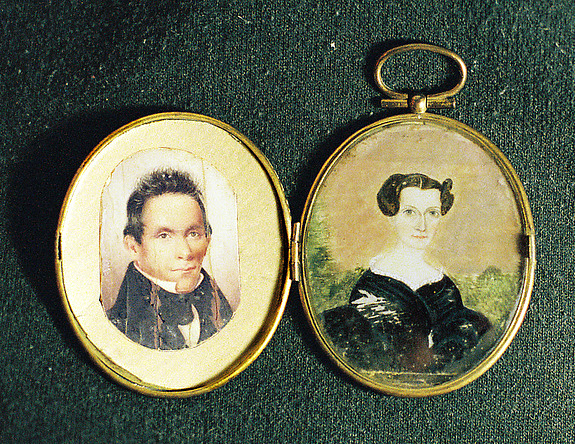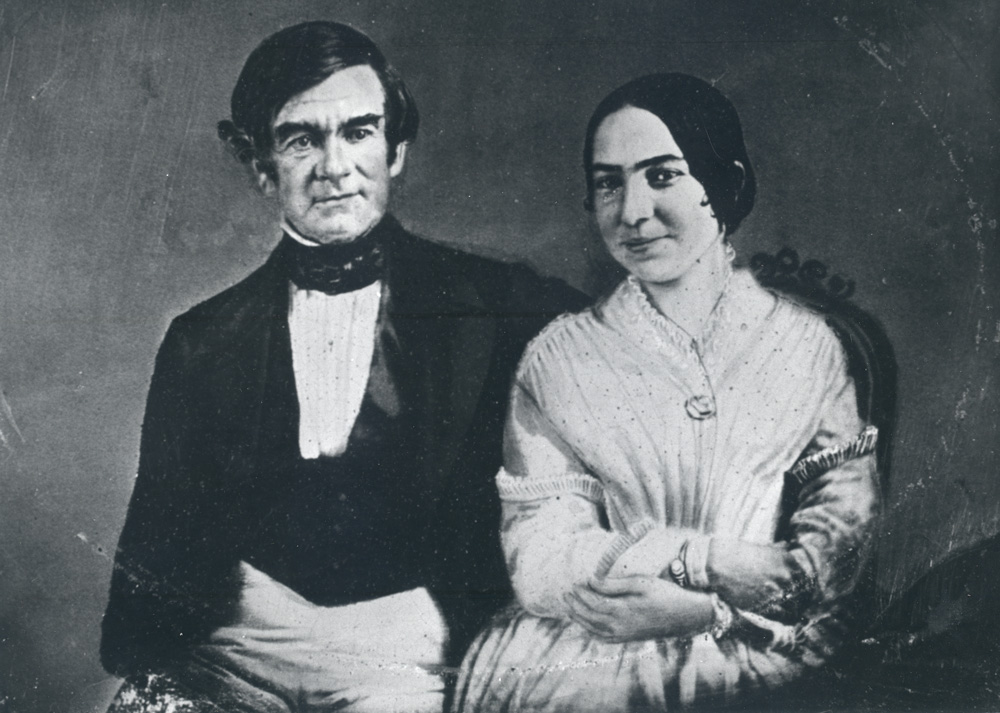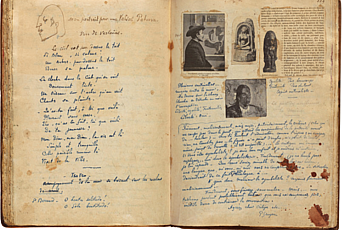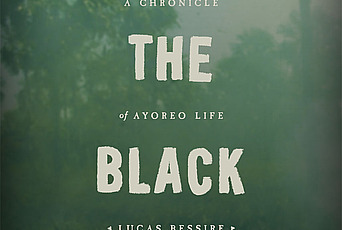Going Against History?

When leading church elders posted the wedding banns on the church doors in Cornwall, Connecticut, in the summer of 1825, all hell broke loose. The banns proclaimed that Harriett Gold, a nineteen-year-old white woman, was to marry Elias Boudinot, a young Cherokee man and a recent graduate of the town’s Foreign Mission School.
Born Gallegina Uwatie, or Buck Watie, Elias had already crossed the boundaries of nations. He took his new name out of respect for Elias Boudinot (1740–1821), the School patron and congressional statesman of New Jersey, whom he had met on the journey from his native Georgia to Cornwall. The original Boudinot had married Hannah Stockton, whose Princeton family had bought their land from William Penn and whose brother was one of the signers of the Declaration of Independence. A trustee of the College of New Jersey (later Princeton University), Boudinot founded the American Bible Society, a nationalistic effort that included James Fenimore Cooper, author of The Last of the Mohicans. His religious tracts expounded theories that the Indians were from the lost tribes of Israel. He also wrote sentimental poems about his beloved wife and the happiness brought by their marriage.
Boudinot the statesman died before Elias, his Cherokee protégé, went, in the words of his Cornwall patrons, “against history.” In the 1820s, intermarriage between “whites” and Native Americans was illegal in several states. Elsewhere, community opprobrium acted as a powerful deterrent. These romances crossed the boundaries of the national imagination. They conflicted with the plans envisaged for the early Republic. In Cornwall, a nativist sense of belonging was starting to displace any thoughts of the prior residency of indigenous peoples. Meanwhile, the Cherokee had constituted themselves as a nation with written laws that in ways mirrored those of the United States.
Due to its respectable citizens and “sober youth,” church leaders chose Cornwall as a suitable town for a mission school. In the 1810s and ’20s, Pacific Islanders and some Native American men studied there. The School’s founders had not anticipated trouble, for surely no white woman would marry an “Indian,” let alone leave the United States to emigrate to the imperiled Cherokee Nation.
Back home in New Echota, capital of the Cherokee Nation, Harriett’s fiancé received a letter containing a drawing of a gallows. Harriett did not receive any of Elias’s letters. Church leaders confiscated what they called their “secret correspondence” and intercepted the others. Despite my extensive searches, the letters seem forever lost.
The townspeople’s reactions took on all the color of a Hollywood drama. After Harriett disclosed her marriage plans, her brother Stephen exploded, shouting and screaming so uncontrollably that he had to be locked in a room. Harriett and Stephen had been close, singing, walking, and riding together.
Harriett had always lived in her family home, but she began hiding in the house of a family friend. Looking out of a window toward Cornwall’s attractive village green, she wrote that she witnessed a “full prospect of the solemn transactions in our valley.”
Gathering all her steel, Harriett described the events. She heard a chorus of youthful squeals, jeering, and rude shouting. Metallic vibrations of the church bell filled the town, tolling and echoing—as they had when her sister died. Harriett looked down at her fine writing paper and breathed in the aroma of the moist black ink. Then she smelled the fresh smoke.
Harriett’s brother Stephen and her childhood friends gathered together on the town common to burn effigies of herself and her fiancé Elias in a huge bonfire. Once invited into the church elders’ homes to dine, Elias was now rendered nameless—“the Indian,” the enemy—a stereotypical cardboard cutout effigy to be thrown into hellfire.
The house in which Harriett wrote overlooked the village green. Too frightened to go out, she spoke of herself in the third person. Harriett loved singing, and Sunday hymns gave her an exhilarating communion with her peers and a way of communicating with God. However, Harriett was no longer permitted to join her choir group. The last time she attended, the girls wore black crepe around their arms—bands used to mourn the dead. In Harriett’s words, “the publick,” “good people and bad,” are not only against her, they wish her dead.
As she wrote, Harriett mustered a sense of moral rectitude, stating what she could hardly describe: “the scenes we have witnessed the week past. Yes, in this Christian land. The members of the Mission School many of them said it was more than they ever knew among the heathen.”
The prospect of this marriage tested the boundaries of frontier, of social inclusion, and of colonizer virtue.
I will summarize the complex plotline that followed. Harriett’s respectable parents Eleanor and Benjamin were rocked. Their other daughters had “married well”—to a colonel, a pastor, and so forth. They opposed the marriage vehemently, sending a letter to Elias refusing his request for their daughter’s hand. But when Harriett became very ill, they feared that she would die. Conceding that Harriett had done nothing wrong against law or religion, they saw her illness as a sign that they were going against “God’s will.” They declared her brother-in-law’s accusations that “the milk will spill” and her children will be “black” as caused by “pride and prejudice.” Some outside pastors agreed to marry the couple in Cornwall. Protected by supporters, the newlyweds traveled back to the Cherokee Nation under the cover of night.
Elias’s family lovingly welcomed Harriett into the Cherokee Nation; the stories of her courage had preceded her arrival. Elias edited the first indigenous newspaper, the Cherokee Phoenix, and became an influential political figure. The couple had children that Harriett described as more beautiful than any in New England. The first boy was called William Penn Boudinot.
When Harriett contracted a fatal illness in 1836, Elias lamented the hurt that she still carried. After many months of grieving for her, he announced that he would marry another white woman, their children’s schoolteacher, Delight Sargeant.
A few years later, in June 1839, Elias was murdered. Prominent in a push to ensure the Cherokee Nation’s political survival, he signed the Treaty of Echota in 1835, which caved in to federal pressure for his Nation to move from their homelands to the “Indian Territories” in the West. Rescinding land without the full consent of the Cherokee Nation was a crime punishable by death. His assailants cut off his right hand—the hand that had signed the treaty. At the same time, another former Cornwall scholar and Cherokee, John Ridge, who had also married a Cornwall girl, and his wealthy and powerful father, The Ridge, were also killed.

One member of the Ridge–Boudinot party, Elias’s brother Stand Watie, survived the attacks and planned to retaliate by assassinating Ross. However, Elias’s widow, Delight Sargeant, warned Ross of the imminent attack, saving his life.
From the 1820s, the Cherokee Nation enacted various laws to curb intermarriage and prevent white men from marrying Cherokee women. Ross famously railed against intermarriage. On at least two occasions, he prevented family members from marrying outsiders.
Yet, in the 1840s, after the Trail of Tears, when renegotiating treaties with the United States government, Ross himself actively courted white women. When he and the schoolgirl Mary Brian Stapler of Wilmington, Delaware, started a courtship correspondence, it was marked by a self-conscious humor that playfully subverted all the colonizing clichés about such “history-defying” unions.
Despite Ross’s trading and transport business and a palatial plantation, they joked about his “wigwam” in the “wilderness” and about Mary as a captive white bride. To one of his friends, he referred to Mary as a “trophy” from the North that he was stealing to take to the wilds of the “West.” Engaged in ongoing diplomatic negotiations, Ross quipped about the parallels between contracting a treaty with the United States government and a treaty for marriage.
Although she was a Quaker, Mary took on the role of mistress of his plantation and its slaves. The Society of Friends “unfriended” her for marrying an outsider. Pastor Orson Douglass of the Mariner’s church conducted the ceremony in Philadelphia, Pennsylvania. Their wedding party included Ross’s nieces and nephews, students at prestigious schools in the East. Dolley Madison, the former First Lady, sent them flowers.
Mary and John had beautiful, dark-eyed children they called Annie and John Junior, and a romantic, loving marriage. When their daughter turned nineteen, Mary reminisced to John, who was still engaged in treaty negotiations: “Well my dear Husband how is thee & they Brother of the Forest Land getting along. I hope the Red & Pale faces will act together as friendly & well, as in the times of my good old Quaker ancestor, William Penn.” (June 2, 1864) Mary and John continued to exchange wry remarks about their transnational union. Making light of the fact that their marriage and family were implicated in the making of nations, they knew that both marriage and sovereignty required ongoing performances. In every sense, they both knew that their “illicit love’” would play a role in subverting “history.”


